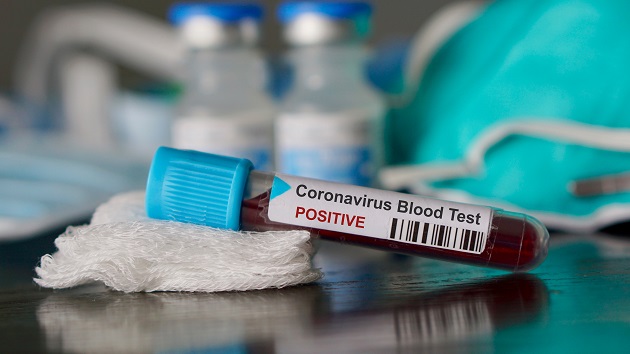Samara Heisz/iStock(NEW YORK) — The novel coronavirus outbreak, which began in Wuhan, China, in December, has expanded to touch nearly every corner of the globe. Hundreds of thousands of people around the world have been sickened and thousands of others have died.
The World Health Organization has declared the virus a global health emergency and rated COVID-19’s global risk of spread and impact as “very high,” the most serious designation the organization gives.Here’s a timeline of how the outbreak has unfolded so far:Dec. 31, 2019: WHO says mysterious pneumonia sickening dozens in ChinaHealth authorities in China confirm that dozens of people in Wuhan, China, are being treated for pneumonia from an unknown source. Many of those sickened had visited a live animal market in Wuhan, but authorities say there is no evidence of the virus spreading from person to person.Jan. 11, 2020: China reports 1st novel coronavirus deathChinese state media reports the first death from novel coronavirus, a 61-year-old man who had visited the live animal market in Wuhan.Jan. 21, 2020: 1st confirmed case in the United StatesA man in his 30s from Washington state, who traveled to Wuhan, is diagnosed with novel coronavirus. Japan, South Korea and Thailand also report their first cases one day prior.Jan. 23, 2020: China imposes strict lockdown in WuhanChina imposes aggressive containment measures in Wuhan, the epicenter of the outbreak, suspending flights and trains and shutting down subways, buses and ferries in an attempt to stem the spread of the virus.Jan. 30, 2020: WHO declares global health emergencyFor the sixth time in history, the World Health Organization declares a “public health emergency of international concern,” a designation reserved for extraordinary events that threaten to spread internationally.Feb. 5, 2020: Diamond Princess cruise ship quarantinedMore than 3,600 passengers are quarantined on a cruise ship off the coast of Yokohama, Japan, while passengers and crew undergo health screenings. The number of confirmed cases on board the ship would eventually swell to more than 700, making it one of the largest outbreaks outside of China.Feb. 11, 2020: Novel coronavirus renamed COVID-19The WHO announces that novel coronavirus’ formal new name is COVID-19. “Co” stands for coronavirus, “Vi” is for virus and “D” is for disease. Health officials purposely avoid naming COVID-19 after a geographical location, animal or group of people, so as not to stigmatize people or places.Feb. 26, 2020: 1st case of suspected local transmission in United StatesThe Centers for Disease Control and Prevention (CDC) confirms the first case of COVID-19 in a patient in California with no travel history to an outbreak area, nor contact with anyone diagnosed with the virus. It’s suspected to be the first instance of local transmission in the United States. Oregon, Washington and New York soon report their own cases of possible community transmission.Feb. 29, 2020: 1st death reported in United StatesThe first COVID-19 death is reported in Washington state, after a man with no travel history to China dies on Feb. 28 at Evergreen Health Medical Center in Kirkland, Washington. Two deaths that occurred Feb. 26 at a nearby nursing home would later be recorded as the first COVID-19 deaths to occur in the United States.March 3, 2020: CDC lifts restrictions for virus testingThe CDC issues new guidance that allows anyone to be tested for the virus without restriction. Previously, only those who had traveled to an outbreak area, who had close contact with people diagnosed with COVID-19, or those with severe symptoms, could get tested.March 13, 2020: Trump declares national emergencyPresident Donald Trump declares a U.S. national emergency, which he says will open up $50 billion in federal funding to fight COVID-19.March 15, 2020: CDC warns against large gatheringsThe CDC warns against holding or attending gatherings larger than 50 people, including conferences, festivals, parades, concerts, sporting events and weddings for eight weeks, recommending that individuals cancel or postpone those events to avoid spreading the virus or introducing it into new communities.March 18, 2020: China reports no new local infectionsChina reports no new domestic infections in the country for the first time since the outbreak began. If the trend holds for 14 days, it could be a sign that China’s outbreak is ending. The country is still seeing travel-related COVID-19 cases and it remains to be seen whether China will be able to prevent a second wave of infection, once the government’s strict lockdown measures are lifted.March 24, 2020: Japan postpones OlympicsJapan postpones the 2020 Summer Olympics, which were originally slated to be held in Tokyo starting July 24, until summer 2021. Countries including Canada and Australia had already announced that given the public health risk of the COVID-19 pandemic, they would not be sending their athletes to the Games.March 24, 2020: India announces 21-day complete lockdown
Indian Prime Minister Narendra Modi announces a total ban on the country’s 1.3 billion citizens leaving their homes for 21 days, in order to stop the spread of COVID-19.Copyright © 2020, ABC Audio. All rights reserved.












